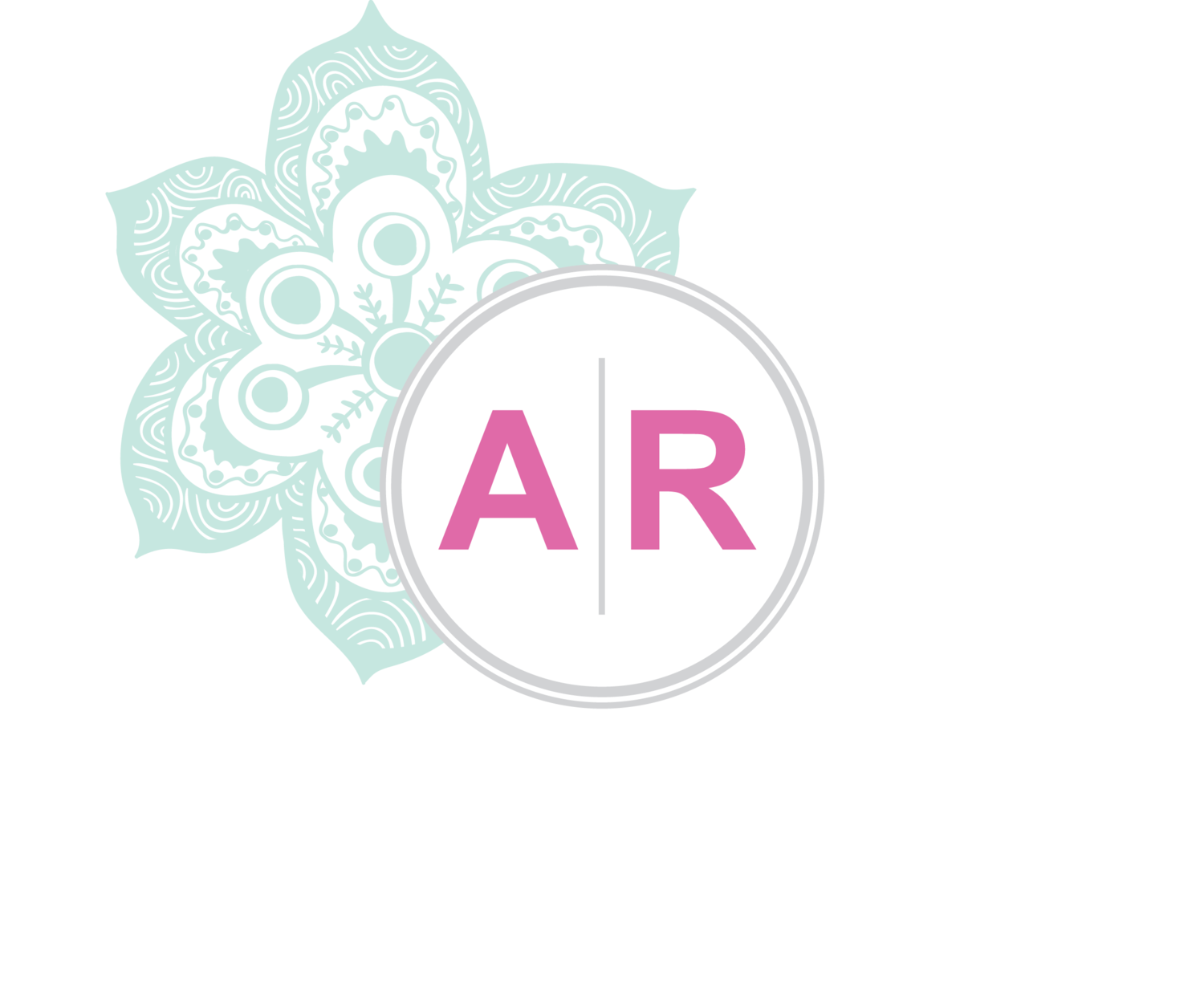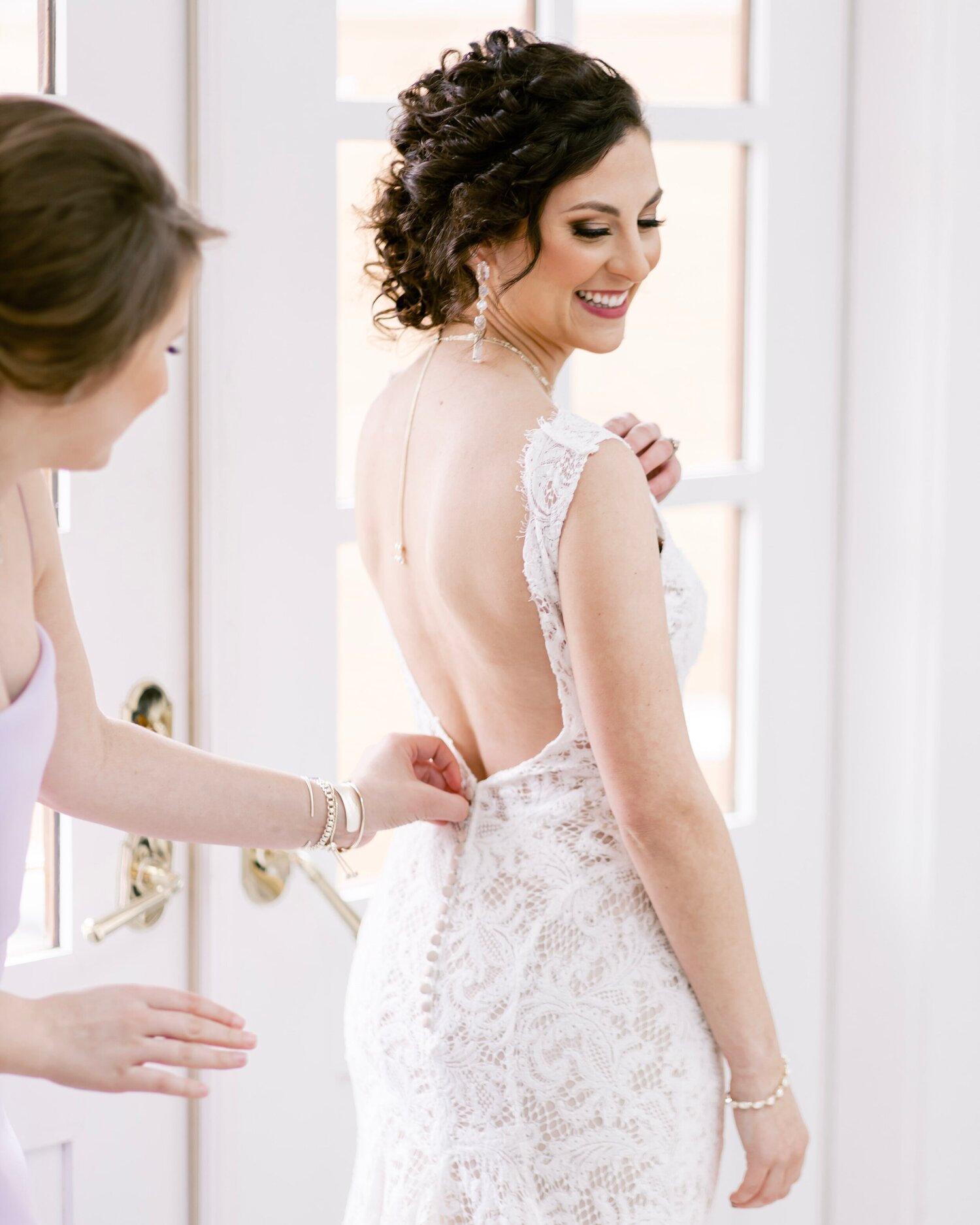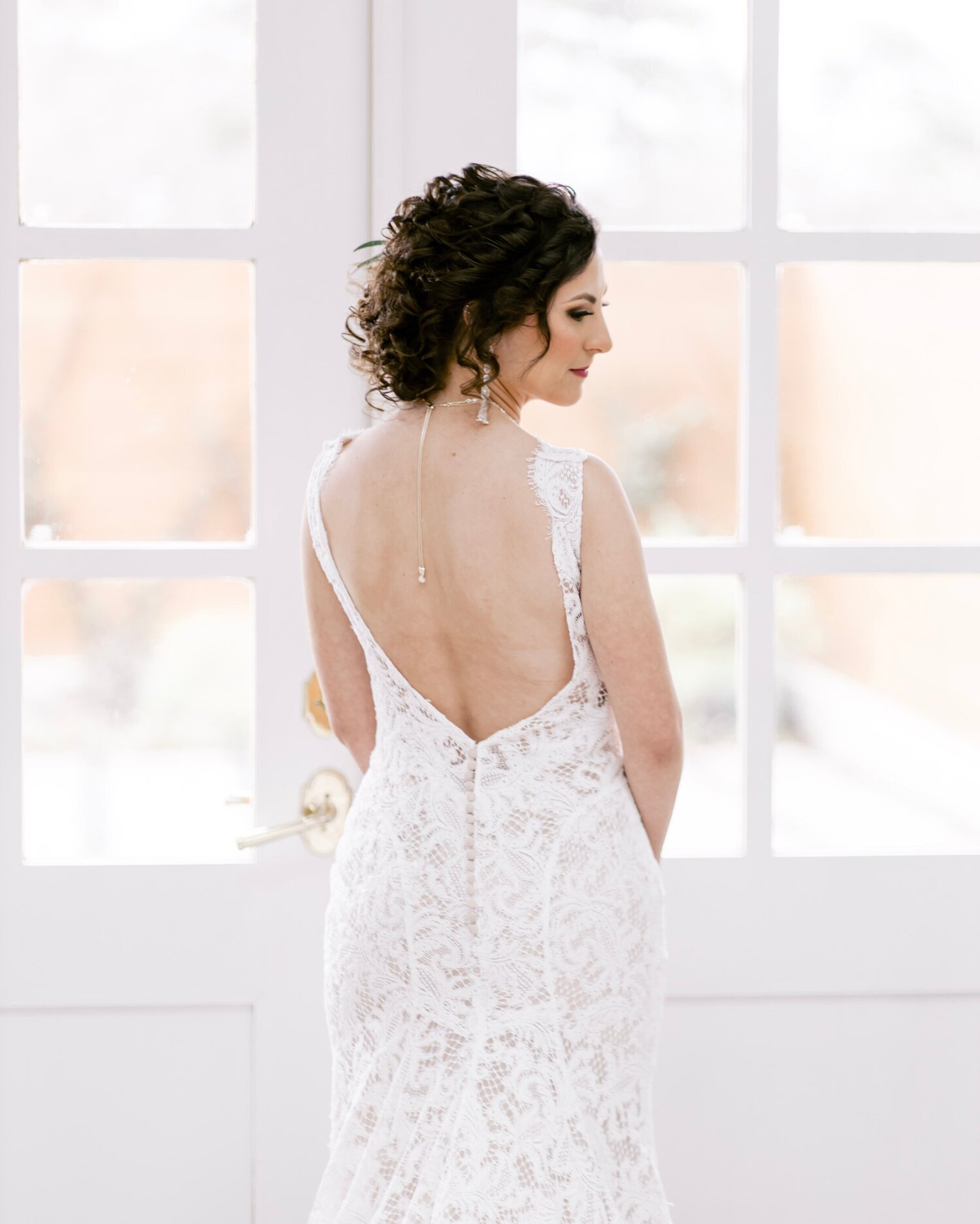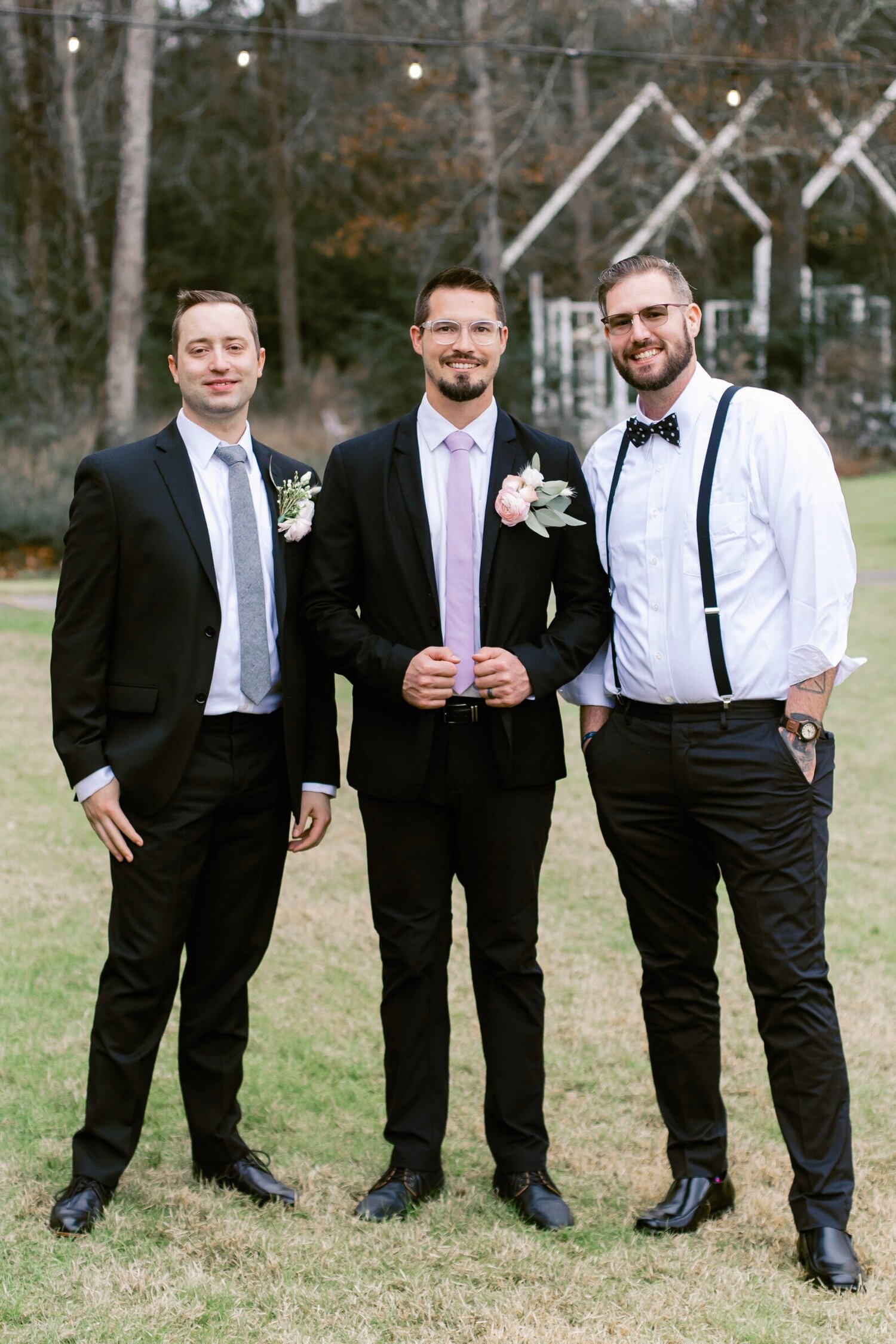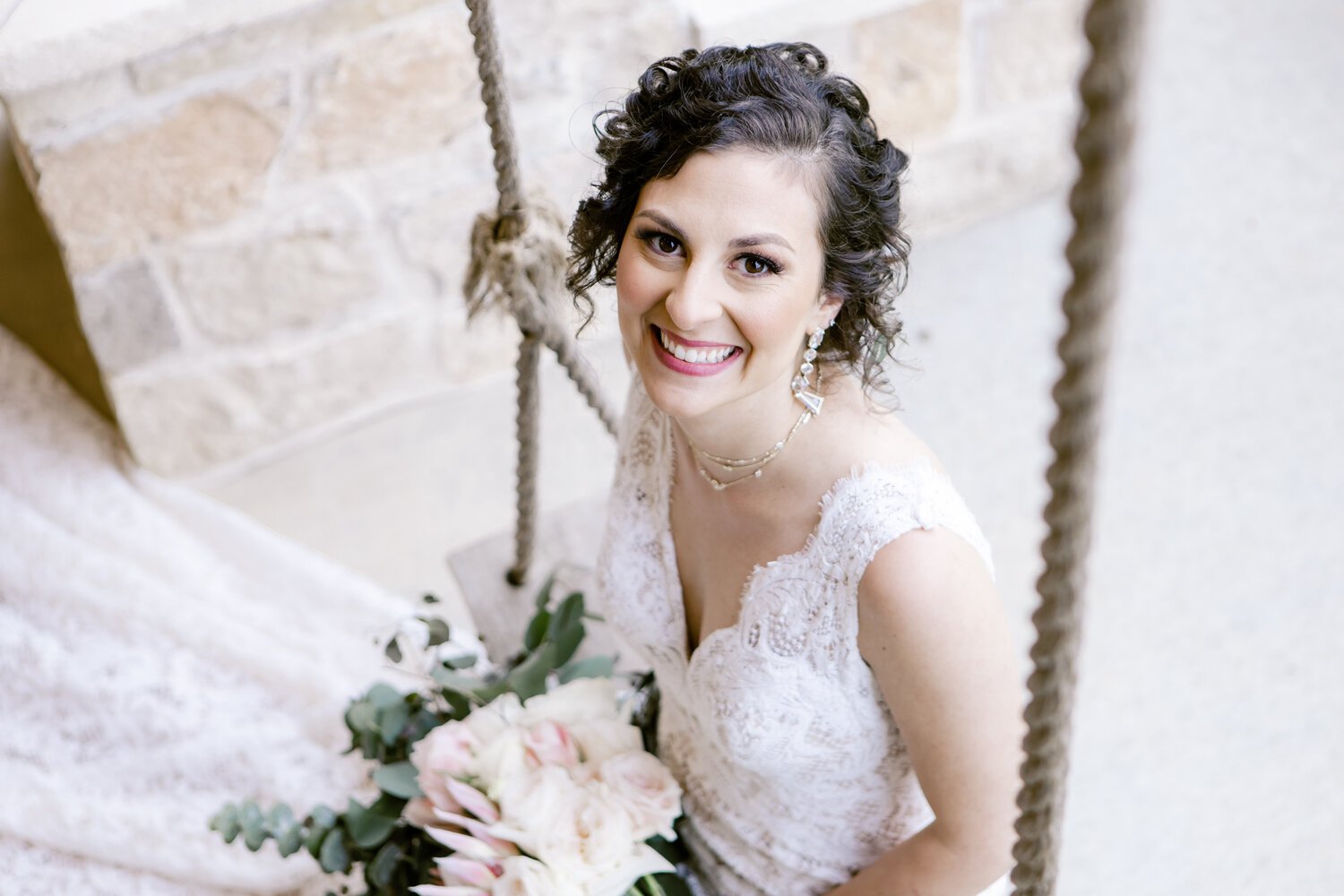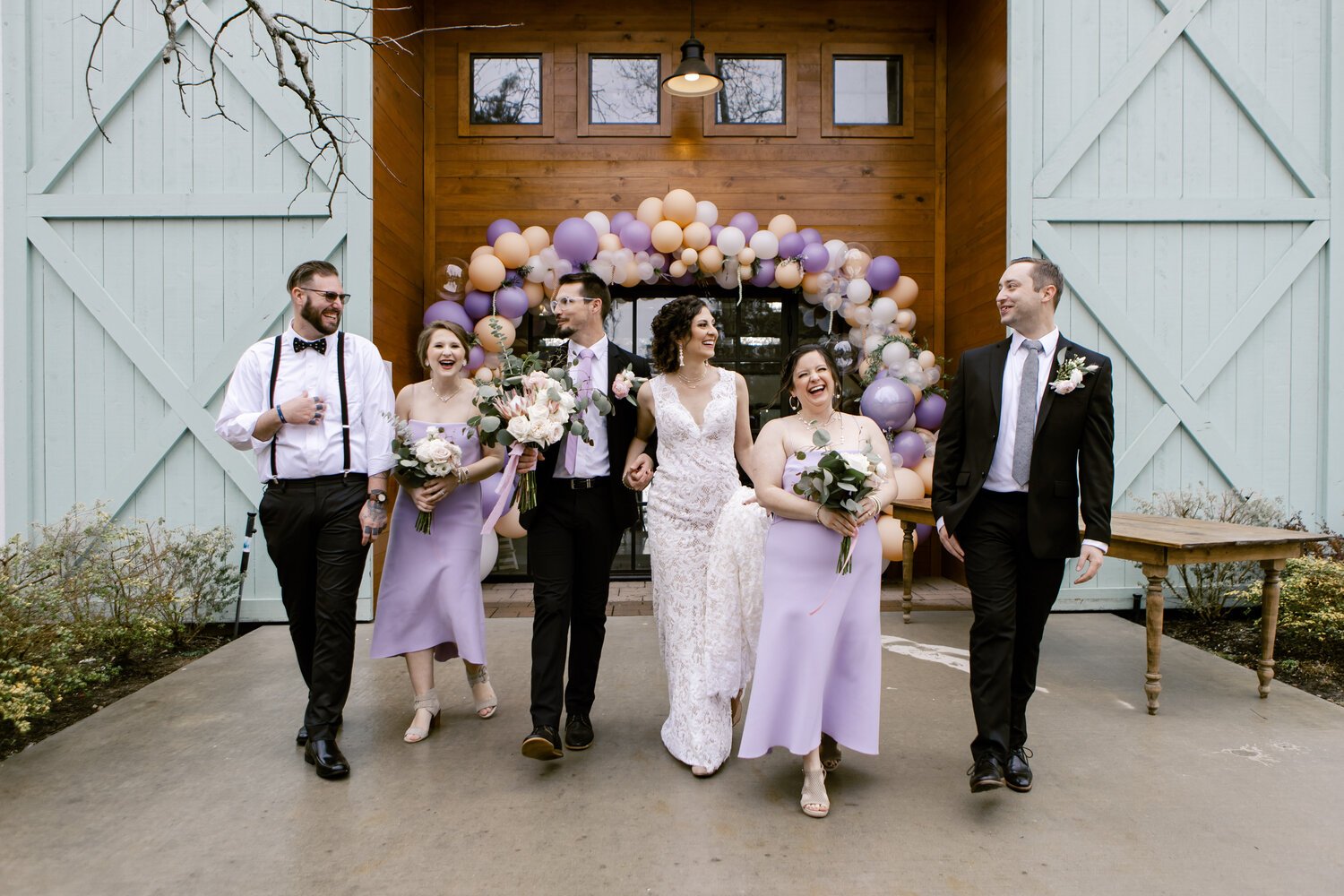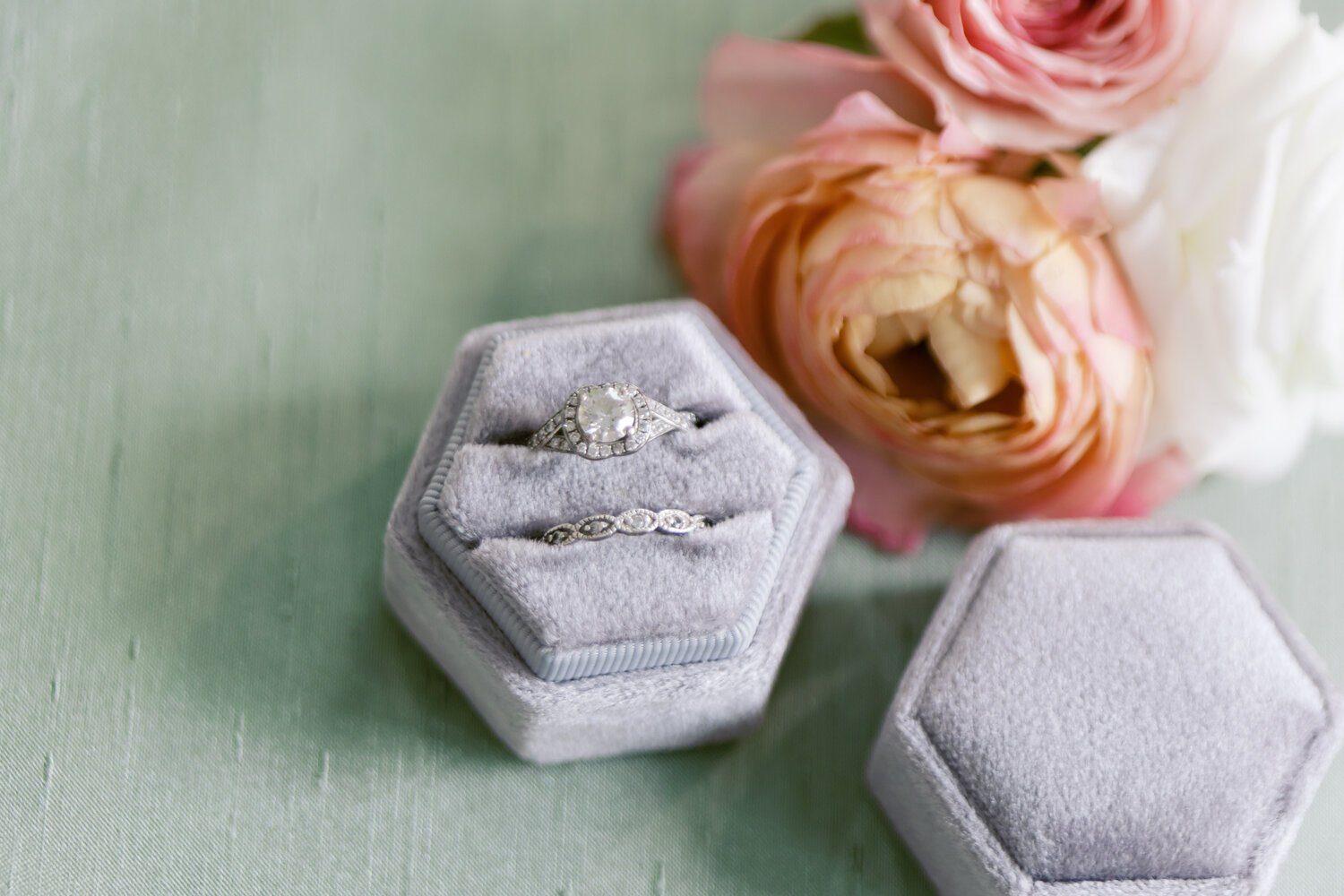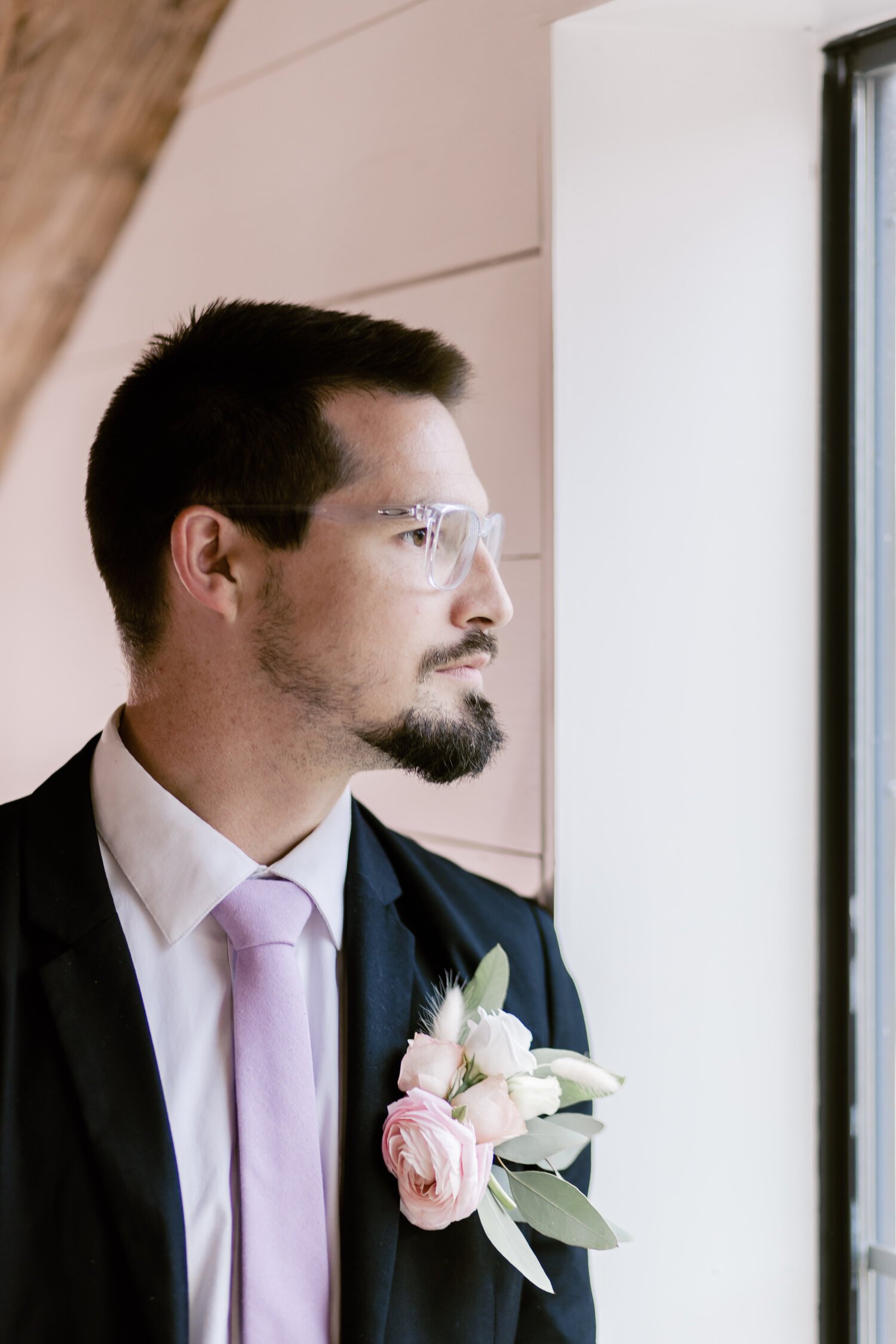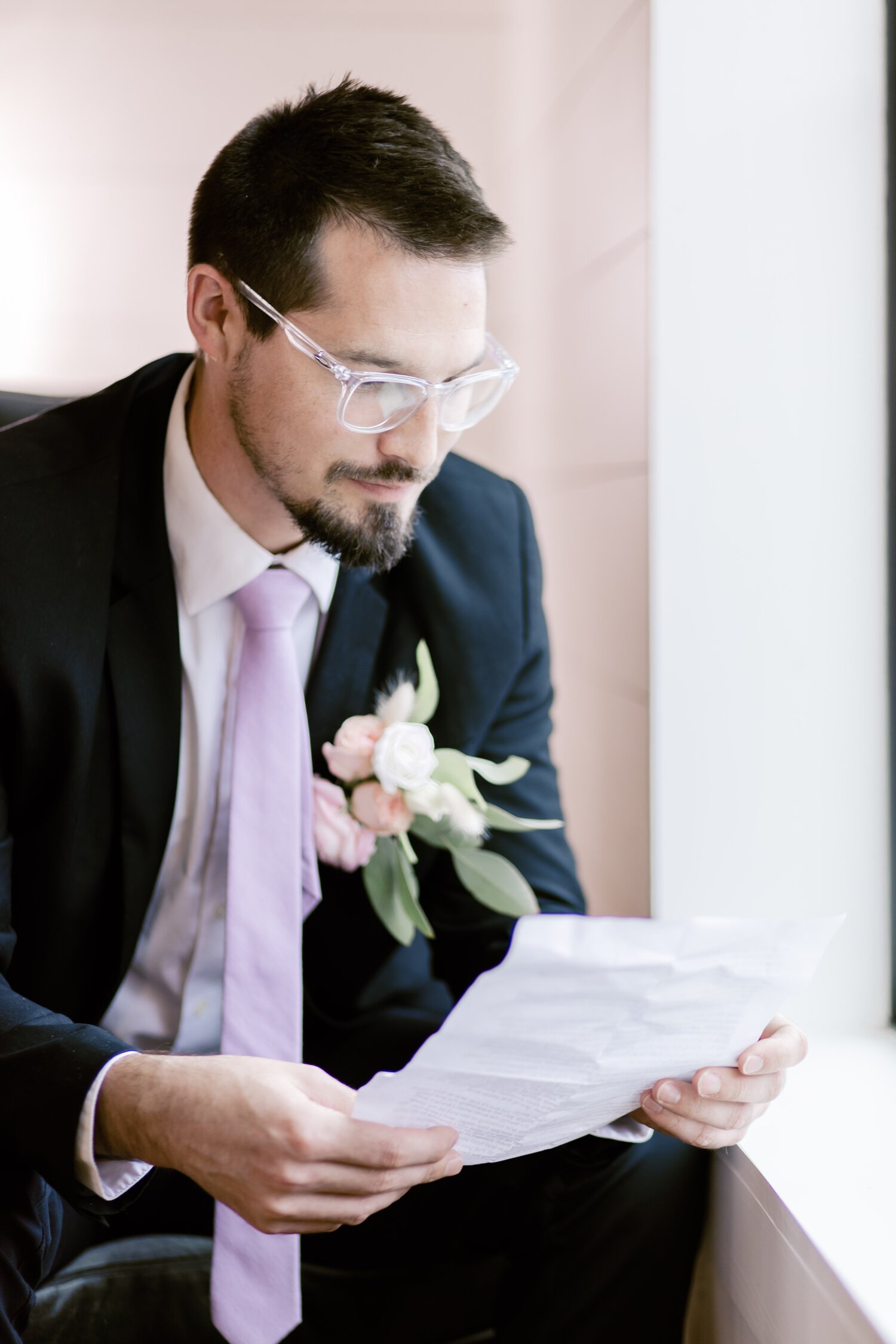WEDDING PHOTOGRAPHY WITH A PURPOSE
Planning tips for creating the wedding images you really want
The wedding industry has no shortage of inspirational photos of beautiful events. A glance at any bridal, beauty, or fashion magazine will reveal perfectly placed props, flawless hair and makeup, and gorgeous gowns all in breathtaking settings. These images evoke complete visual stories before reading one word of text about the event details. This my friend, is intentional!
To create these imitation-worthy images, photo shoots require a full production team of set decorators, wardrobe stylists, professional models, lighting experts, and more. This excludes a slew of behind the scenes hacks and tricks to get that “just right, but not for real-life” look. Even with your best efforts, it may be virtually impossible to replicate the exact look of a styled shoot that you’ve been using for inspiration.
Different venues, different lighting set-ups, a different shade of lipstick, and the fact that you are completely different people than the ones who are in the photos will all play a part in how similar your final images are to your inspiration photos — and that is perfectly fine. You want your wedding photo album to be uniquely you and to reflect you and your sweetheart. But in your uniqueness, you do not have to lose the sense of style and mood that originally sparked your imagination.
I recently had a fantastic opportunity to serve as the local day-of coordinator for The Big Fake Wedding experience. The show was the ultimate styled photo shoot complete with the perfect venue and color palette, a gorgeous couple, and a wedding vendor dream team made up of florists, designers, makeup artists, and hairstylists. Everything was absolutely perfect! Everyone looked stunning, the venue lighting was perfect, and hundreds of amazing, viable images were produced from the event. If this is what you want for your wedding, keep reading — we’ll show you exactly what you need to do before your big day to get the wedding images that you really want.
An Insider’s Perspective on Wedding Photography
The person responsible for all of the gorgeous photos in this blog post is Edgar Paniagua, founder and owner of Anchor Studios Photography in Houston, TX. I met Edgar while working together on the Big Fake Wedding Show.
Edgar’s expertise on the importance of photographic composition, maximizing the value of the image environment, lighting, depth perception, and event flow is based on his coursework at the University of Houston and his many years of working alongside some of Houston’s greatest wedding photographers. When talking about his own photography style, Edgar describes his image style as light and airy. He describes his event management style as relaxed and relatable, but non-intrusive. He loves immersing himself into an event, celebrating with the couple’s family and friends to capture each emotion in real-time. In fact, Edgar confesses that most of his work is anchored in capturing the spontaneous moments that blossom from these emotions. Every hug, tear, and laugh at a wedding provides inspiration for his work.
I thought that Edgar would be the perfect person for this particular post because he is literally “in the trenches” with couples on their wedding day. He is frequently combated with day-of wedding challenges that must be quickly and creatively overcome with his own fresh brand of savvy know-how.
When shooting for Anchor Studios, Edgar has an “unsaid” Top 5 Essentials List for capturing consistently beautiful wedding images. He notes that there are a few crucial factors that most great wedding photos have in common when planning for the event: good lighting, an appealing color palette and tasteful decorations, an adherence to an accurate itinerary, careful outside vendor selection to execute the vision, and a photogenic venue.
In addition to these five guidelines, we decided to ask Edgar for some additional tips to help you better prepare for your own gorgeous wedding day photos. You will find Edgar’s answers to some of your most pressing photography questions in the specific Q&A sections listed below.
LIGHTING
Q: What is the golden hour and why is it such a great time to shoot?
A: Golden hour is the time period either shortly after (morning) sunrise or right before (evening) sunset. During this time, natural lighting has tones of gold that are favorable for producing soft, romantic lighting. In the afternoon, golden hour begins about 1 ½ hours before sunset. We like to shoot during this time because photographers tend to get soft shadows and even lighting.
Q: Should I consider a different shoot start time if I am having an outdoor wedding ceremony vs. an indoor event?
A: For an outdoor event, I would suggest picking a start time about 2 hours before sunset. This will ensure that your shots don’t come out too harsh due to excessive sunlight, but they are also taken early enough in the day to have enough sunlight to capture both the ceremony and post-ceremony portraits.
For an indoor wedding, any time is great as long as the venue has either (1) plenty of natural sunlight coming in through the windows or (2) if the interior is well lit.
Q: What sort of guidelines do you have for overhead lighting for indoor venues?
A: When discussing overhead lighting, or the main “house lights”, you want to select a venue with consistent temperatures in lighting. This means that you don’t want a single room that mixes fluorescent lighting with tungsten light bulbs for example. It’s fine if different rooms have their own specific type of lighting just as long as the lighting is consistent throughout that one room.
Additionally, if possible, I would even recommend that you find a venue with lights with a 5000K to 6000K temperature color range. Photos taken within these specifications make photos seem more crisp and clean, and make photo editing easier for the photographer.
Here’s an example of what lighting within this color range would look like.
TEMPERATURE COLOR RANGES
Q: What are your thoughts on colored uplighting for indoor events?
A: I can work with colored uplights or any lighting scenario for that matter, but it’s not my personal preference unless they are being used exclusively in the dancefloor area. If you do however plan on using uplights as a part of the overall venue decor, just make sure that these lights don’t conflict with overhead house lighting.
Q: What types of lighting adjustments do you make when photographing low-lit portions of the reception such as toasts, dancing, departures, etc.?
A: While I don’t completely rely on the lighting of the venue, if possible, I will dim the overall venue house lights. Because my equipment is designed to adjust to any lighting situation, I will also adjust my own lighting equipment to get the best lighting results. I can also bring along softboxes to light up the dancefloor, giving it the minimal amount of light necessary for a nice dramatic look. Another thing to factor in when shooting a reception is the lighting set often provided by the DJ. Typically, this is not a huge problem and normally I can communicate with the DJ beforehand. Once slight adjustments are made, both of us have what we need to do our jobs.
VENDOR SELECTION AND SCHEDULING
Q: How important is outside vendor selection when you are photographing an event?
A: Working on a wedding is a collaborative effort. On my end, for example, I love taking clean, detailed shots of the venue set-up and decor before guests arrive, but if a client has hired other vendors who are late and/or are not completing their set-up on time, this affects my shooting time. If I have less time to shoot, it will limit the number of shots of wedding details that I can take.
For me to provide the best service to my clients, it is imperative that not only the wedding party arrives on time, but that my clients hire reputable vendors who work within their pre-designated time frames. Special attention should be given to many “time-critical vendors” such as hairstylists, makeup artists, decorators, florists, and even venues who can impact the flow of the entire wedding day.
Additionally, when outside vendors bring along personal camera assistants/crews to photograph their own promotional images for marketing and social media purposes, it can be very disruptive to my creative and logistical processes. Oftentimes, these extra photographers will block crucial shots that my clients have requested and paid for. If possible, ask your vendors to avoid doing this.
Q: What can wedding coordinators do to assist you with creating great images?
A: I cannot stress this enough to my clients — HAVE AN ITINERARY! While there is some spontaneity involved with capturing wedding images, there still needs to be a plan. Wedding planners not only create itineraries for the day, but they also enforce the schedule and make sure that the wedding party and vendors stay as close to the schedule as possible. Adhering to a predetermined schedule makes sure that every shot that the client requests has time to be captured and that nothing is rushed. Using itineraries is an amazing way to let me know when something is going to happen and it gives me plenty of time to make any equipment changes if needed. They really give me a heads up!
POSED VS. CANDID SHOTS
Q: What estimated percentage of shots do you shoot as candids vs. posed photos?
A: I would say that about 70% of the photos that I shoot for an entire wedding will be candid photos.
Q: What are some of the benefits of shooting more wedding images candidly as opposed to staged or posed?
A: Personally, I love shooting candids more than posed shots. One of the reasons is due to the variety of images that you get. Candid photos also tell a story and capture emotion. However, I don’t completely discard posed sessions since they definitely have their pros as well. While posed shots may often lack the creativity of candid photos, they are a great way of documenting your wedding. Posed photos act as a sort of “roll call” and show who was in attendance at your event. They also make sure that there is at least one photo taken of every person who celebrated your big day with you.
COLOR PALETTE AND DECOR
Q: Are there any specific color palettes that mesh well with your style of photography?
A: My photography style is light and airy so the colors that complement my style the most are going to be pastel colors. Light purples, greens, blues, and pinks look amazing. While I can work with any color palette that my clients select, there are certain colors that I would stay away from if possible. Overly saturated colors like hot pink and bright oranges are not ideal; however, it really just depends on how well the colors you have chosen are represented/used and complement one another.
Q: What’s the best way for a bride to most effectively convey her intended decor and color palette choices in her wedding photos?
A: I love creating flat lays of wedding items! A flat lay is a collection of details from your wedding that are placed on a flat surface. For their wedding day, I always ask my couples to bring small items such as invitations and envelopes, ring boxes, a couple of stems from the florist, and ribbons in the color scheme of the wedding to shoot as a flat lay. These types of images not only represent all of the colors within your palette within one image, but they also pay tribute to your decor style. Flat lays are great options for photo album covers, social media posts, and more!
Q: What background decor suggestions do you have when photographing weddings?
A: Backgrounds that give off a two-dimensional effect can often make pictures look flat and dull. Try adding 3-D props to make a more convincing shot. I also love using antique furniture, rustic wood decor, or floral wall backgrounds like the ones we rent through Anchor Studios.
Q: What advice would you give to couples who are considering their final wedding images before deciding on their wedding decor?
A: I would say that it’s always best to keep your decorations simple and elegant as opposed to flashy and complex. As a general rule of thumb, try to stick to a color palette of no more than four complementary colors. Also select colors that pair well with the decor style and natural coloring of your venue of choice — you should never let your decor outshine your venue.
PHOTO ORIENTATION AND WEDDING ALBUMS
Q: Do you have any preferences for shooting horizontal or vertical images for weddings?
A: Typically, I shoot more than half of my images horizontally. I find that shooting horizontally not only allows me to capture more of what’s happening around me within the frame, but landscape images tend to be more social media friendly and are easier to share. Aside from some social media constraints, vertical images are still valuable as some moments just look better in a portrait orientation.
Q: When you are designing a wedding album for your clients, do you have a specific “formula” for creating the perfect book?
A: When designing a photo album, I typically vary the number of pictures per page. There is no right or wrong when it comes to the amount of pictures you'd like to put on a page, but I mainly like to focus on how the album flows. I usually arrange the photos chronologically and add a few pictures that I designate as transitions in between.
One important thing to keep in mind when adding images is the proper balance between making sure that nothing important gets cropped out while not being afraid to only use a certain portion of a picture. I also like to play with the unused space on the page and allow for some "blank space". Remember that not all pages need to be filled with many pictures or it could make the page seem over saturated with images. My general rule of thumb is to attach no more than 5 or 6 images per page unless it's a collage of small details.
The albums that I design are 12” x 8” landscape albums. As stated before, most of the pictures I capture are horizontal and a horizontal album allows me to accommodate my images in the best way possible. I also like using horizontal images for dramatic two page spreads. A two page spread is when you have one image (one horizontal photo) that will take up space over two separate, adjacent pages within the horizontal album. I love that it adds some visual interest and variation among all of the album pages.
WEDDING PARTY SELECTION AND SHOT LISTS
Q: In relation to photography, what are your recommendations for the maximum number of bridesmaids and groomsmen that couples should include in their wedding party?
A: Three to six pairs max is a good number for bridesmaids and groomsmen. I find that when you have too many people in your wedding party it unnecessarily extends the length of the photo sessions. If you have more than six couples that you are considering for your wedding party, keep your time constraints in mind and try utilizing some of these guests in a different capacity such as for hosts/hostesses, ushers, readers, etc.
Q: Do you require that your clients provide you with a shot list?
A: I don’t particularly need it, but it does ensure that the couple gets exactly what groupings/combinations they want in addition to my own personal candid and posed shots. It is however helpful if couples provide me with an itinerary/schedule that lets me know what the couple has planned and how much time I have available to get the shots that I want and need.
Q: Immediately after the ceremony, couples often ask for multiple group shot set-ups at the altar with various family members, friends, wedding participants, etc.; however, this often results in multiple images being taken with the exact same background and redundancy in the final wedding album. What is the maximum number of combinations that you would recommend shooting at the same location to avoid this?
A: In order to avoid this issue, there are three different locations that I typically shoot with groups: (1) the altar, (2) reception guest tables, and (3) a designated photo area at the reception.
The altar is the most exclusive area, limited to the couple, the wedding party, and immediate family members only.
In order to stay on schedule, after we move a majority of the wedding guests to the reception and after the bride and groom are introduced, I may ask the couple to go table to table and take photos with guests while they are seated.
Lastly, I like to set-up a designated photo area for extended guests to take photos with the couple once the reception has gotten underway. This designated area can be a spot with a beautiful floral backdrop (such as the flower walls that I offer), a fountain at the venue, or any other feature that photographs well. Typically, the DJ or other announcer can notify guests when and where this will be happening.
Q: What is the maximum number of people that you’d recommend to have for a posed group shot typically taken immediately after the ceremony (i.e. couple + bride’s family, couple + groom’s family, etc)?
A: Typically, I will not pose more than 10 people per grouping during this time. More people in a single shot means (1) more time needed to pose everyone and (2) more shot attempts are needed in order to get the perfect shot. Always remember that the more people that you have in a single shot, the higher the probability that someone has blinked or was not looking directly at the camera and you will have to keep retaking the photo to get it right.
Sometimes I will have couples request shots with 30+ people; however, because this takes more time for set-up, I will leave this shot for last. Keep in mind that larger group photos will require more accommodations and lighting adjustments from group to group which may ultimately decrease uniformity between photos.
SHOT DIRECTION AND FOCAL POINTS
Q: Is there a particular direction that you prefer to shoot from?
A: In general, I love capturing images from interesting angles. However, where I actually decide to shoot from is mainly dependent upon the light that is made available to me. If the sun is out and very bright, I will typically pose people with their backs against the sun to prevent shadows on the face. On an overcast day, I have more flexibility and can usually pose them any way that I’d like because shadows are usually softer.
Q: How do focal points play a role in adding more interest to your wedding photos?
A: I like using focal points in my images to add interesting effects to the photos. I like to balance bokeh in my pictures to create depth. Bokeh is the blurry effect created with a camera lens. It allows the photographer to show the viewer what subject he/she is focusing on. Bokeh can also be used to blur out unnecessary things in the background such as guests, trees, the venue itself, and more. By doing this, I can choose to direct the viewer towards the object(s) that I want to give more attention to. The results are amazing!
VENUE SELECTION
Q: How important is venue selection to the images that you are able to capture?
A: A beautiful, well-lit venue is one of my top must-haves for creating beautiful wedding images.
Q: What factors should couples consider before selecting a venue?
A: Here are 5 things that I would typically look for in an ideal wedding venue:
#1: Designated areas
Make sure that the venue has these sceneries, preferably at the same location but in different areas of the entire property.
A bridal and/or groom’s suite
A designated photography area such as a field, garden, or other space that will serve as a great backdrop
Ceremony space
Reception space
#2: Monochromatic, subtle interior coloring
I prefer to photograph venues with white ceilings and walls. These elements allow for brighter pictures and will make the room seem larger as well.
#3: Windows and natural light
Look for venues with plenty of windows. This is great for lighting.
#4: A great floorplan for all your needs
Plan out where the center of attention will be for the reception. Make sure that the environments surrounding special event spaces such as the sweetheart table, dancefloor, and the cake table are photo-worthy.
#5: A “Grand Entrance”
Having a “grand-entrance” entry that leads into the reception hall is a plus. This is a great place to shoot the bride and groom’s entrance into the reception after the ceremony.
Q: What are your thoughts on shooting indoor vs. outdoor weddings?
A: I personally prefer outdoor scenery because (weather and time permitting) they usually have a good amount of natural sunlight available. However, you can’t go wrong with an indoor event as long as it has enough light.
Q: Do you have any preferences in terms of using fabric pipe and draping for an event?
A: In my opinion, flat wall pipe and draping should only be used when an area needs to be transformed into a wedding venue. Venue spaces such as a conference room, a multi-purpose center, backyard, or any other space that is not exclusively designed to serve as a wedding venue (more specifically a ceremony site) can be improved greatly with the use of pipe and drape. However, the overuse of piping and draping can overwhelm an event space and can become incredibly pricey. My suggestion is to select a venue that already provides beautiful sceneries in order to avoid the extra expense.
Final Thoughts from Aisle Runners
A beautiful wedding is kind of like a great, blockbuster movie. Even with the best script, a great film is only as good as the wardrobe, set design, and cinematography that support it. A beautiful final product is not just about recording the action, but about the images that are created and how the images are captured. Similarly, when preparing for your wedding, try to avoid checking off a series of to-do list items and place some of the attention on how your color palette and decor will translate in photos.
IN MY OPINION, [GOOD] WEDDING PHOTOGRAPHY IS …
1| A combination of fantastic people, places…..and things
While the people attending your wedding will provide the action and your venue/place serves as the backdrop to your marvelous day, don’t forget about all the things that will make a special appearance. Be intentional about capturing photos of the tiniest “cast members” of your production — the props. Wedding props will help fill in any gaps to the narrative of your wedding story when placed within a wedding album.
Take images of details such as your wedding ring(s), your marriage license, a wedding invitation suite, your jewelry and shoes for the day, a tube of lipstick or compact, even a bottle of your favorite perfume or nail polish. Play around with these objects at home prior to your wedding date. Don’t forget to browse Pinterest for inspiration, ask your photographer for recommendations, and begin purchasing new or gathering clean objects that you already have.
2| Well-planned
All of the visual components that will surround you on your wedding day should always be given considerable thought. Will your floral arrangements look great when photographed from every angle? When your wedding ring is photographed, what will be surrounding it? Will my images look flat and one-dimensional? Can I add small embellishments that will add purpose and focus to the statement pieces of my wedding?
Planning beforehand how your objects will be photographed will not only create gorgeous images, but it will also allow your photographer to move more swiftly on the wedding day. Just remember, a photographer who can operate more efficiently is more relaxed and can take even more awe-inspiring images.
When photographing your wedding ring for example, plan to have a few loose flower blooms from the florist, a velvet ring box, and a beautifully textured fabric as a backdrop handy.
Make an effort to pack up everything you need, plus a few additional options, a few weeks in advance. Allow your photographer to play around with the props you have to create beautiful still images of your wedding accessories.
3| The creation of a memorable experience and not the documentation of tasks or objects
Wedding dress — check! Bride’s side of the family — check! Couples’ first dance — check! You may technically have everything you need, but when planning your wedding, do not become singularly focused on completing tasks as opposed to creating long-lasting experiences. One of the best ways to capture an experience over the task of wedding planning is by capturing the full spectrum of emotions and senses in your photographs in a creative, figurative way as well.
4| The translation of emotion and senses
While tangible items like table linens and flowers may be easily photographed — how do you capture ‘joy’ on film? Consider what ‘romance’, ‘excitement’, or ‘anticipation’ may look like.
When selecting a photographer, be sure to request some candid shots where your emotions are on full display, from the smallest tear running down the side of his cheek to your grandest belly laugh.
Also, don’t forget about capturing your sense of taste. Photographing your food and drinks in a unique way such as on a serving tray or as part of a table setting with cutlery and linen is a great way to remind you of all the delicious treats that you served.
5| Highlighting what’s important (and masking what’s not)
While it may be your intention to capture your wedding guests dancing the night away to your DJ’s playlist, you may be incredibly annoyed by lots of final images of the DJ’s exposed cords and equipment in the background. You may also have some concerns about certain venue features including carpet/flooring patterns, sparse greenery that is out of season, exit signs, etc. Talk to your vendors and make sure that all vendor services and areas are as neat and photogenic as possible.
Additionally, while we all have cell phones, no one wants to see them in photos either in the background or blocking your photographer’s intended target. Prevent dozens of ruined images by opting for an “unplugged” event, free of guest cameras and phones.
Make sure that your photographer has the ability to quickly assess your entire environment and know what angles to shoot from to accentuate the positives, and minimize the less desirable areas.
6| Exclusive and intentional
As you begin to compile your guest list, you are sure to find that there are different “tiers” of wedding guests on your list. Priority guests typically exclude co-workers, neighbors, and recently acquired acquaintances. In other words, priority guests are ones who you will still be in close contact with 20 years from now.
With this in mind, talk to your photographer about who to focus the lens toward. While it is perfectly fine to photograph interesting, photogenic wedding guests, make sure that the final images that you receive include pictures of the most important people in your life for this once in a lifetime event. This would especially include older family members and the people you will tell your children about for many years to come.
On a personal note, I cannot tell you how much I cherish the one special photo that I have of my grandmother and I blowing kisses to one another on my wedding day. On the other hand, I have found very little value in the multiple photos of our usher’s date—who I’ve never seen again. Please talk about intentionality with your photographer and establish the mood and relationships that you want to highlight in your photos.
Want more planning tips? We’d love to help!
Special thanks to The Big Fake Wedding, The Meekermark, Anchor Studios Photography, Grace and Ivory Co., Kendra Scott, Beloved Makeup and Hair, Amora Flower Bar and Weddings, and Ballooms of Houston for the images featured in this post.
Please be sure to reach out to Edgar Paniagua of Anchor Studios for availability and for their full list of services which includes proposal and engagement portraits, full day-of event coverage, photo albums, prints, canvasses, and digital galleries, one-year anniversary photoshoots, floral backdrops, photo booths, and more.

